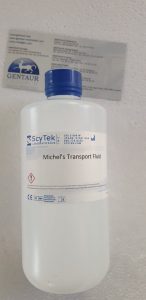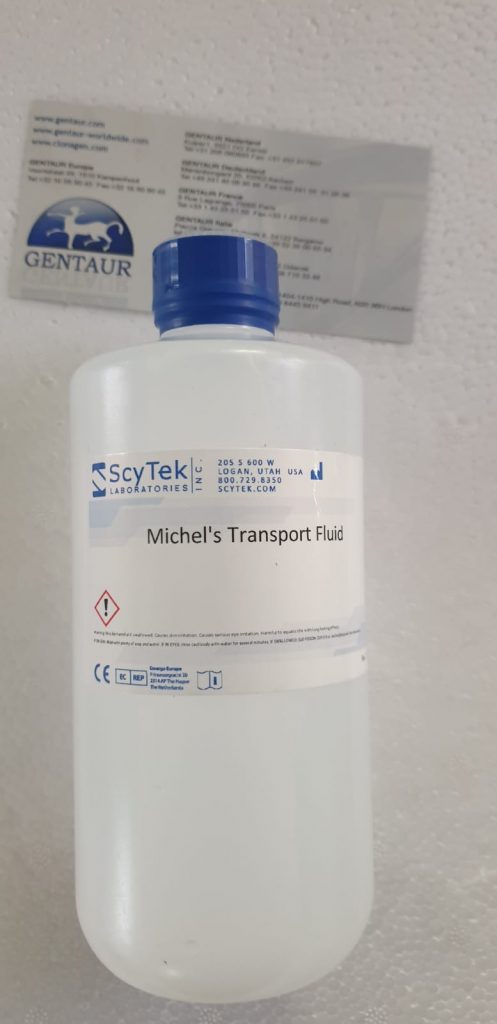Lyme disease (LD), caused by infection with Borrelia burgdorferi, is the most common tick-borne infection in many regions of Eurasia. Antibody detection is the most frequently used laboratory test, favoring a two-step serodiagnostic algorithm; immunoenzymatic detection of antibodies to C6 has been shown to perform similarly to a standard two-step workflow.
The aim of this study was the performance evaluation of the C6 Lyme ELISA kit compared to a standard two-step algorithm in three laboratories located in the northeastern region of Italy which cater to areas with different LD epidemiology. A total of 804 samples were tested, of which 695 gave concordant results between C6 testing and routine workflow (564 negative, 131 positive).
Wherever available, clinical presentation and additional laboratory tests were analyzed to solve discrepancies. The C6 based method showed a good concordance with the standard two-step algorithm (Cohen’s κ = 0.619), however, the distribution of discrepancies seems to point towards a slightly lower specificity of C6 testing, which is supported by literature and could impact on patient management. The C6 ELISA, therefore, is not an ideal stand-alone test; however, if integrated into a two-step algorithm, it might play a part in achieving a sensitive, specific laboratory diagnosis of LD.
Development of a Direct Competitive ELISA Kit for Detecting Deoxynivalenol Contamination in Wheat.
This study was conducted to develop a self-assembled direct competitive enzyme-linked immunosorbent assay (dcELISA) kit for the detection of deoxynivalenol (DON) in food and feed grains. Based on the preparation of anti-DON monoclonal antibodies, we established a standard curve with dcELISA and optimized the detection conditions. The performance of the kit was evaluated by comparison with high-performance liquid chromatography (HPLC).
The minimum detection limit of DON with the kit was 0.62 ng/mL, the linear range was from 1.0 to 113.24 ng/mL and the half-maximal inhibition concentration (IC50) was 6.61 ng/mL in the working buffer; there was a limit of detection (LOD) of 62 ng/g, and the detection range was from 100 to 11324 ng/g in authentic agricultural samples. We examined four samples of wheat bran, wheat flour, corn flour and corn for DON recovery. The average recovery was in the range of 77.1% to 107.0%, and the relative standard deviation (RSD) ranged from 4.2% to 11.9%. In addition, the kit has the advantages of high specificity, good stability, a long effective life and negligible sample matrix interference.
Finally, wheat samples from farms in the six provinces of Henan, Anhui, Hebei, Shandong, Jiangsu and Gansu in China were analyzed by the kit. A total of 30 samples were randomly checked (five samples in each province), and the results were in good agreement with the standardized HPLC method. These tests showed that the dcELISA kit had good performance and met relevant technical requirements, and it had the characteristics of accuracy, reliability, convenience and high-throughput screening for DON detection. Therefore, the developed kit is suitable for rapid screening of DON in marketed products.
Characterization of three commercial ELISA kits for detection of BOHV-1 gE specific antibodies in serum and milk samples and applicability of bulk milk for determination of herd status.
Vaccination of animals with gE-deleted vaccine strains (gE- marker vaccines) and differential detection of vaccinated vs infected animals with antibody ELISA targeting the gE or the gB proteins have been proved to be useful tools in programs for control and eradication of the bovine herpesvirus 1 (BoHV-1) responsible for infectious bovine rhinotracheitis (IBR), a major pathogen of cattle.

The diagnostic sensitivity (DSe) and specificity (DSp) of three commercial gE ELISA kits from IDEXX, IDVet and CIV-HIPRA were compared for serum and milk matrices. Limiting the analysis to 198 individual with concordant ELISA results in serum (91 naïve, 37 vaccinated and 70 infected) the DSe of gE kits was estimated to 0,97 for IDEXX, 0,93 for CIV-HIPRA and 0,53 for IDVet using milk samples and the DSp to 0,95 for IDEXX, 1,00 for IDVet and CIV-HIPRA.
The applicability of gE ELISA for individual or bulk milk testing as an additional tool in control programs dedicated to the certification and control of vaccinated herds was evaluated. Two of the three evaluated gE ELISA kits presented substantial to good agreement individual milk and serum samples. The bulk-tank milk also proved to be suitable for the detection of BoHV-1 in vaccinated herds provided that gE prevalence is superior to 10% as false negative results are often observed at lower gE herd prevalence. This limitation could be reduced to 8% of prevalence when a prior concentration step was applied to bulk milk samples.
Does serum anti-Müllerian hormone levels always discriminate presence of the ovaries in adult bitches? Comparison of two ELISA kits.
Anti-Müllerian hormone (AMH) is produced in the ovary, and thus, it is an excellent marker of follicle pool in females. Current interest is the clinical use of this parameter as a biomarker to assess presence or absence of an intact ovary and to diagnose ovarian remnant syndrome (ORS) following incomplete ovariohysterectomy (OHE) in bitches.
The aim of this study was to evaluate serum AMH concentrations in bitches (n = 34) before and after OHE using two different commercial ELISA kits, one of which is based on detecting human AMH and the other is based on detecting human AMH and the other specified for canine AMH. Furthermore, serum AMH levels were also measured in six ORS cases to compare the diagnostic utility of the two different ELISA kits.
Serum AMH concentrations measured using the human and canine kit prior to and after OHE were 0.32 ± 0.24, 0.006 ± 0.22 ng/ml (p < .001) and 12.08 ± 22.81, 9.55 ± 15.42 ng/ml (p = .868), respectively. Thus, the canine-based kit was not able to reveal the significant drop in serum AMH levels. In conclusion, the human-based ELISA kits successfully detected the drop in serum AMH concentrations.
[Linking template=”default” type=”products” search=”Gentaur Mouse and Rat Leptin ELISA Kits test” header=”3″ limit=”136″ start=”4″ showCatalogNumber=”true” showSize=”true” site=”www.gentaur.pl” linkProductCatalogNumber=”true” showPrice=”true” showDescription=”true” showAdditionalInformation=”true” showImage=”true” showSchemaMarkup=”true” imageWidth=”” imageHeight=””]
Reliable results can only be achieved from well-designed ELISA kits, and AMH levels might be a useful diagnostic tool for the evaluation of presence or absence of ovaries as well as for the detection of ORS cases in bitches.

